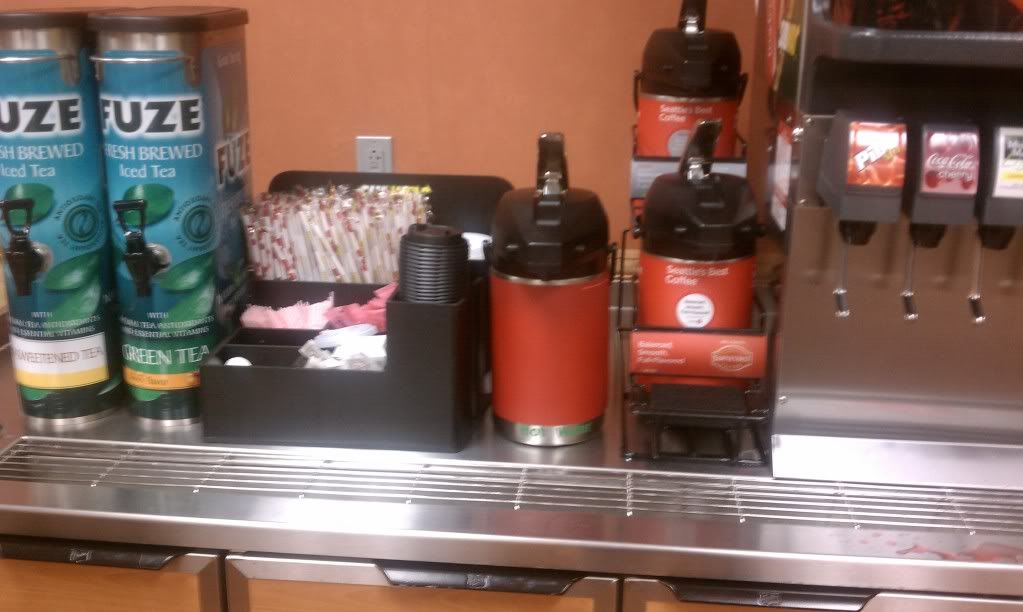jar546
CBO
Higher than 48" and approximately 26" back off the counter edge. The one on the upper section in the back.
What say thee?

What say thee?

Your premier resource for building code knowledge.
This forum remains free to the public thanks to the generous support of our Sawhorse Members and Corporate Sponsors. Their contributions help keep this community thriving and accessible.
Want enhanced access to expert discussions and exclusive features? Learn more about the benefits here.
Ready to upgrade? Log in and upgrade now.


Not covered by the building code.jar546 said:What say thee?
...and 1109.8.2 in the 2006 IBC confirms it: Such shelving and display units shall not be required to comply with reach-range provisions.brudgers said:Not covered by the building code.Is an architectural barrier, under ADAAG.
next time you go to a walmart or costco look for a sign that says they will assist anyone with a disability that needs help.jeharrarch said:Does a coffee carafe count as an "architectural or mechanical component" of the building? It clearly isn't fixed to the counter... and an existing condition - Is there an attendant/cashier that can assist the disabled user? And why would anyone want Decaf, anyway?? If we're dinging the coffee carafe, then what about the electrical outlet - it's certainly further out of reach. How does one (a) regulate getting to and (b) functionally reach grocery items on the top shelves of prototypical supermarket shelving? They are significantly beyond the 48" maximum height limit. (is it ADA 225.2.2? which is not required to comply with 308?)
Huh? So in a grocery store we would regulate which food items have to be within the reach ranges so every type of color and flavor was accessible?jar546 said:Each coffee is a different flavor so the access to each is not the same
This section does not tell you what is required to be within the reach range requirements. Granted a selve serve coffee carafe and a selve serve fountain soda dispenser provide products to a customer but one is a built in fixture with water, electric and a drain connected to the dispenser. A coffee carafe is not connected to the building and therefore not a building code issuemark handler said:ANSI 117- 2003 308.3 Side Reach.
308.3.1 Unobstructed. Where a clear floor space allows a parallel approach to an element and the side reach is unobstructed, the high side reach shall be 48 inches (1220 mm) maximum and the low side reach shall be 15 inches (380 mm) minimum above the floor.
EXCEPTION: Existing elements shall be permitted at 54 inches (1370 mm) maximum above the floor.
By the way, it's the same in the ANSI 117-98
Nope, I am just putting this all out there for discussion and debate.High Desert said:Huh? So in a grocery store we would regulate which food items have to be within the reach ranges so every type of color and flavor was accessible?I don't think you can regulate portable items like coffee carafes.
One more time for good measure in case anybody missed it before: The ANSI A117.1 is not a scoping mechanism. Chapter 11 of the IBC is your scoping mechanism and determines what is regulated and not...and 1109.8.2 in the 2006 IBC confirms it: Such shelving and display units shall not be required to comply with reach-range provisions.mtlogcabin said:This section does not tell you what is required to be within the reach range requirements. Granted a selve serve coffee carafe and a selve serve fountain soda dispenser provide products to a customer but one is a built in fixture with water, electric and a drain connected to the dispenser. A coffee carafe is not connected to the building and therefore not a building code issue
You have to use the referenced standard in the back of the IBC to find what portions of which Chapters are applicable;Chapter 11 of the IBC is your scoping mechanism and determines what is regulated and not...
I disagree, the words controls, operating mechanisms and hardware refer to items that operate amenities within the building such as thermostats, drop down screens, lights, fans, appliances would be controls. Operating mechanisms would be window cranks, how blinds and window shade are operated and door knobs. Hardware would include window and door locks, latches and other similar devices.controls, operating mechanisms and hardware
